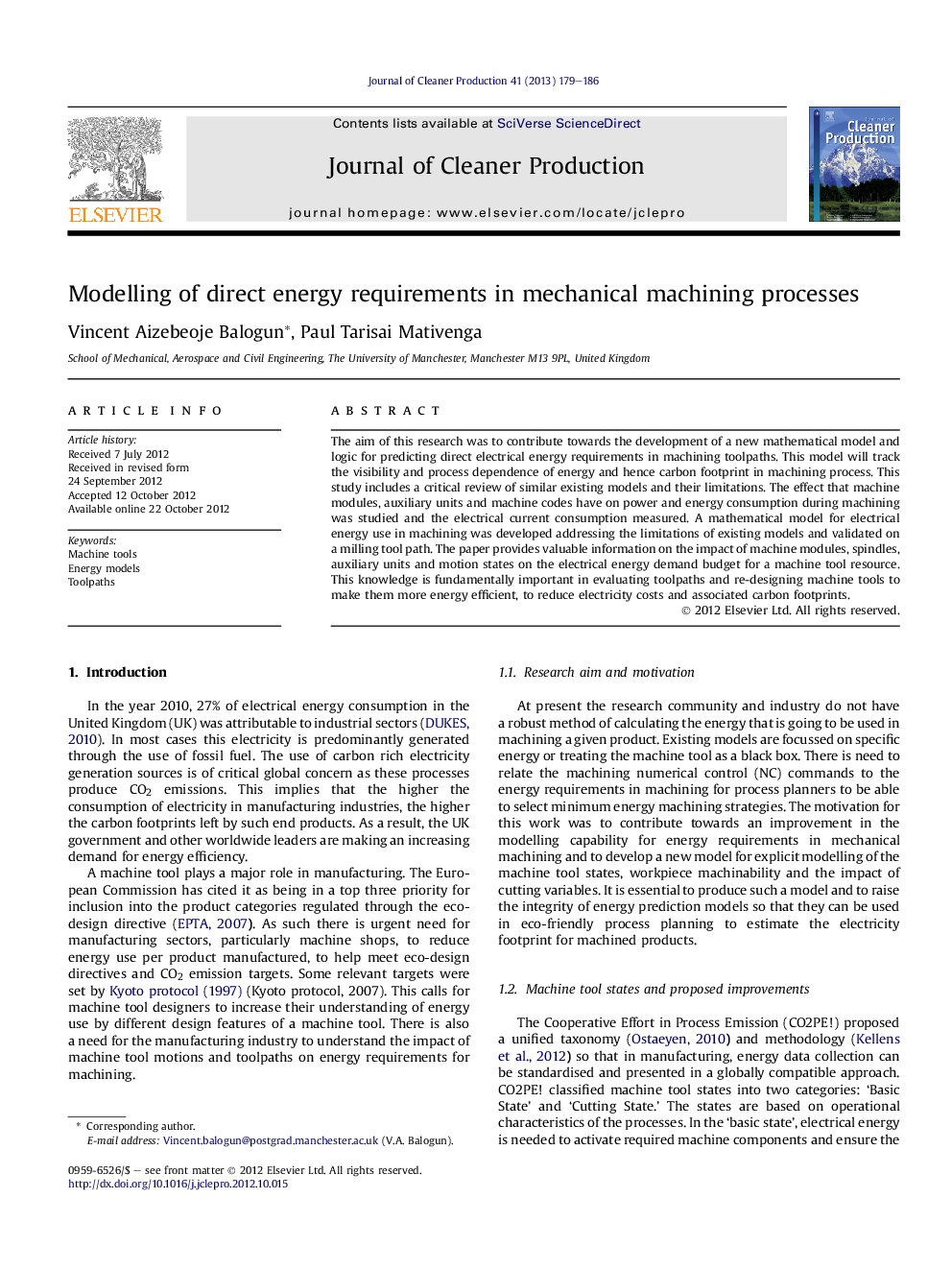| Article ID | Journal | Published Year | Pages | File Type |
|---|---|---|---|---|
| 1745539 | Journal of Cleaner Production | 2013 | 8 Pages |
The aim of this research was to contribute towards the development of a new mathematical model and logic for predicting direct electrical energy requirements in machining toolpaths. This model will track the visibility and process dependence of energy and hence carbon footprint in machining process. This study includes a critical review of similar existing models and their limitations. The effect that machine modules, auxiliary units and machine codes have on power and energy consumption during machining was studied and the electrical current consumption measured. A mathematical model for electrical energy use in machining was developed addressing the limitations of existing models and validated on a milling tool path. The paper provides valuable information on the impact of machine modules, spindles, auxiliary units and motion states on the electrical energy demand budget for a machine tool resource. This knowledge is fundamentally important in evaluating toolpaths and re-designing machine tools to make them more energy efficient, to reduce electricity costs and associated carbon footprints.
► The paper presents a new and robust model for estimating electrical energy requirements in machining. ► The model is validated by machining experiments. ► This work lays a foundation for sustainable manufacturing and for selecting minimum energy machining strategies. ► This is important in order to account for the cost and environmental burden of energy usage in manufacturing. ► This should enable optimization of resource usage.
